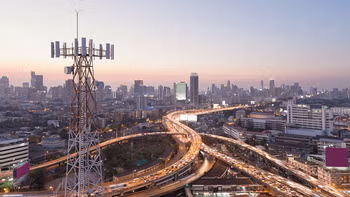Strong growth by Apple's supply chain points to improving iPhone sales

During a year that has seen sales of the Apple iPhone struggle globally, there are subtle signs that the device is making a comeback. JP Morgan analyst Samik Chatterjee sent a note to clients today about the performance of a group made up of companies that supply Apple with parts for the iPhone. In June, for the fourth consecutive month, this group saw it's aggregate revenues rise year-over-year. Last month's rise was 6% compared to May's 9% hike and a large 10% increase recorded for April. The analyst said that for the first half of the calendar year, the revenue from this group rose 12% over the same period last year, and 4% over the first 6 months of 2017.
You might be wondering what this data is telling us. According to Apple Insider, Chatterjee pointed out that this so-called iPhone Supplier Tracker often moves in tandem with iPhone revenue growth. The analyst says, "We believe the monthly supplier revenue trends are supporting our belief that iPhone revenue headwinds are abating despite concerns driven by the uncertainty around the [China] trade stand-off." That is Wall Street lingo that when translated means that sales of the iPhone are picking up. JP Morgan expects Apple to sell 183 million iPhones for the calendar year 2019.
Chatterjee also expects Apple to start moving production of its devices, including the iPhone, out of China. This could prevent Apple from worrying over further trade-tensions between the U.S. and China, but could also help the company escape paying the higher wages that Chinese assembly line workers are expected to receive eventually. And while the analyst says that moving production could take years in order to train a large group of new workers, Apple also will have to rework its supply chain as well. While India and Vietnam are the two frontrunners to replace China, the former now has its own trade issues with the U.S.
"The strong historical correlation between our iPhone Supplier Tracker and iPhone revenue growth leads us to conclude that iPhone revenue declines are indeed moderating and drives higher confidence in limited downside risk to our annual shipment iPhones sales forecast of ~183 mn units in calendar 2019."-Samik Chatterjee, analyst, JP Morgan
We are probably just seven to eight weeks away from the unveiling of the 2019 iPhones and the biggest cosmetic change to the new models will be seen on the back of the phone. Based on renders, in the upper left corner of the rear glass panel, Apple is mounting a square camera module that has not been universally praised. The iPhone 11 and iPhone 11 Max will have three cameras in the module (expected to include a 12MP primary, 12MP telephoto and a new 12MP wide-angle camera with a 120-degree field of view) while the iPhone 11R will have two cameras in the square housing. Inside, the new units will be powered by the 7nm A13 SoC and could offer reverse wireless charging. Similar to PowerShare on the Samsung Galaxy S10 line, this feature will allow users to turn their iPhone screen side down and use the back as a wireless charging pad. This can be used to charge the AirPods carrying case, the Apple Watch, another iPhone or any compatible handset. Because the host phone's battery is used in this process, the 2019 iPhone models are expected to have larger batteries inside.

Render of the Apple iPhone 11
The 2020 iPhones will be redesigned. We could see three phones with OLED panels measuring 6.7-inches, 6.1-inches, and 5.4-inches. There will be smaller notches and two of the models are expected to support 5G connectivity. The A14 SoC could be built using the 5nm process; this means that more transistors will fit inside allowing the chip to be more powerful than its predecessor. Early talk suggests that there could be a 15% improvement in performance. And a Time of Flight (ToF) sensor could be included with the rear-facing cameras on next year's iPhone. This measures the time it takes infrared beams to bounce off the subject and return to the phone. The data is used for more accurate depth mapping to provide improved bokeh effects on portraits. It also could be used to add a rear-facing Face ID feature to the 2020 iPhones.













Things that are NOT allowed: